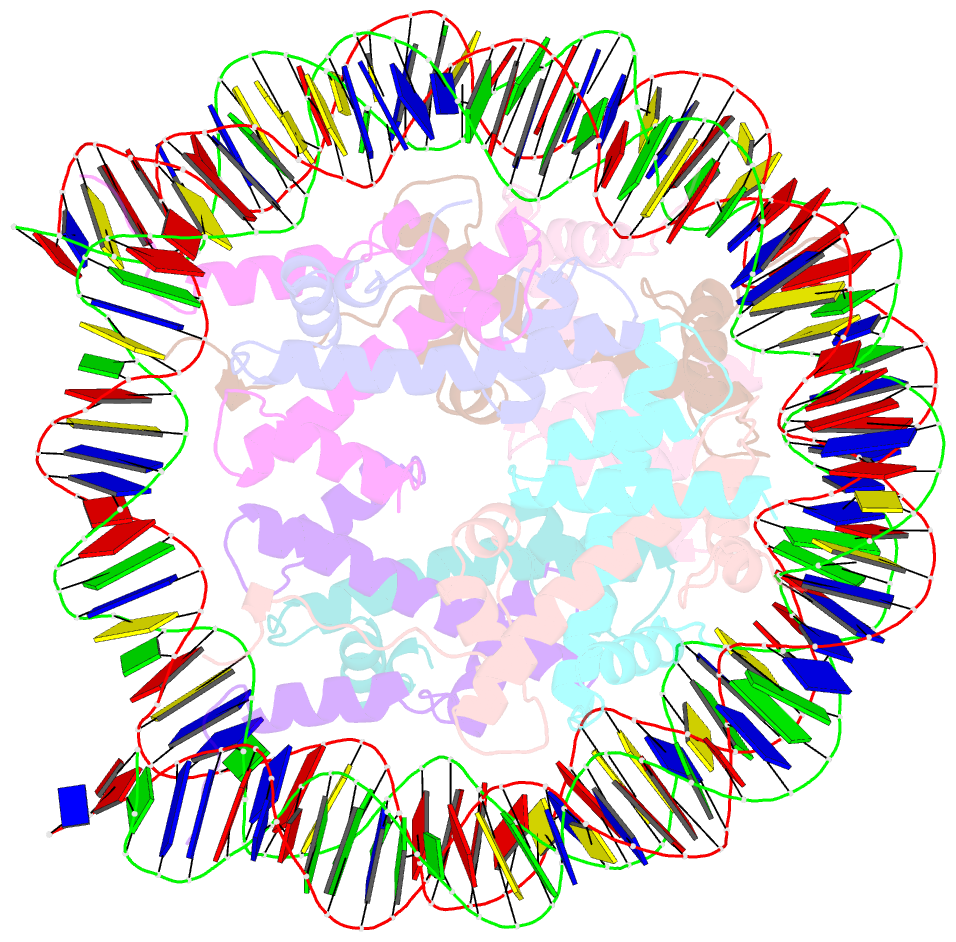Summary information and primary citation
- PDB-id
- 3waa; SNAP-derived features in text and JSON formats;
DNAproDB
- Class
- structural protein-DNA
- Method
- X-ray (3.2 Å)
- Summary
- The nucleosome containing human h2a.z.2
- Reference
- Horikoshi N, Sato K, Shimada K, Arimura Y, Osakabe A, Tachiwana H, Hayashi-Takanaka Y, Iwasaki W, Kagawa W, Harata M, Kimura H, Kurumizaka H (2013): "Structural polymorphism in the L1 loop regions of human H2A.Z.1 and H2A.Z.2." Acta Crystallogr.,Sect.D, 69, 2431-2439. doi: 10.1107/S090744491302252X.
- Abstract
- The histone H2A.Z variant is widely conserved among eukaryotes. Two isoforms, H2A.Z.1 and H2A.Z.2, have been identified in vertebrates and may have distinct functions in cell growth and gene expression. However, no structural differences between H2A.Z.1 and H2A.Z.2 have been reported. In the present study, the crystal structures of nucleosomes containing human H2A.Z.1 and H2A.Z.2 were determined. The structures of the L1 loop regions were found to clearly differ between H2A.Z.1 and H2A.Z.2, although their amino-acid sequences in this region are identical. This structural polymorphism may have been induced by a substitution that evolutionally occurred at the position of amino acid 38 and by the flexible nature of the L1 loops of H2A.Z.1 and H2A.Z.2. It was also found that in living cells nucleosomal H2A.Z.1 exchanges more rapidly than H2A.Z.2. A mutational analysis revealed that the amino-acid difference at position 38 is at least partially responsible for the distinctive dynamics of H2A.Z.1 and H2A.Z.2. These findings provide important new information for understanding the differences in the regulation and functions of H2A.Z.1 and H2A.Z.2 in cells.





